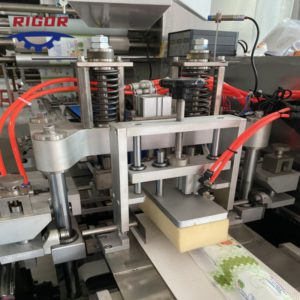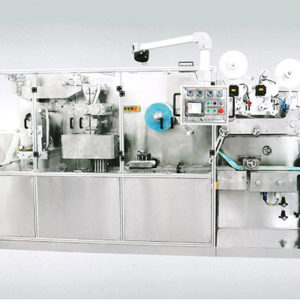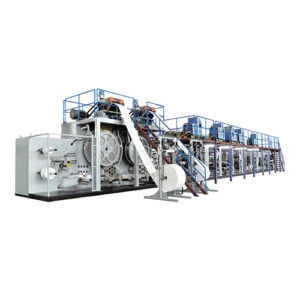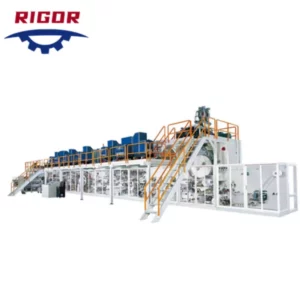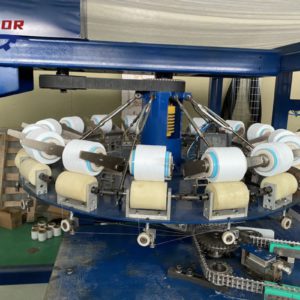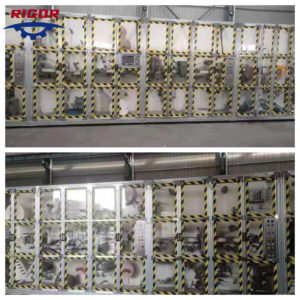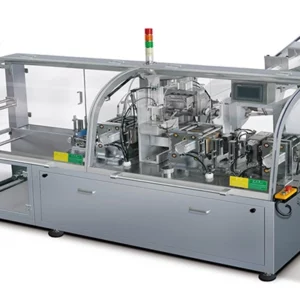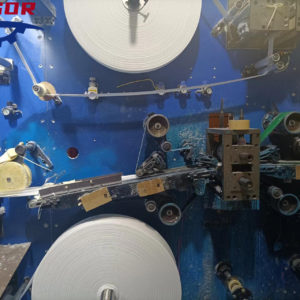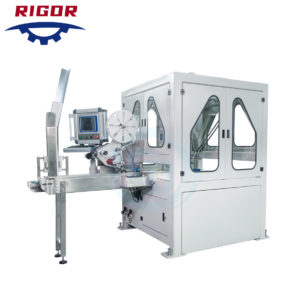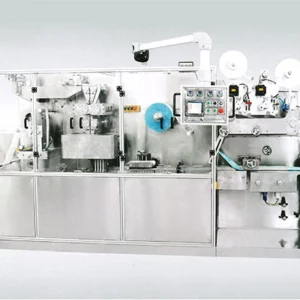
The manufacturing process for wet wipes typically involves the following steps:
- Preparation of the solution: The first step in the manufacturing process is to prepare the solution that will be used to moisten the wipes. This solution may contain water, a cleaning agent, a moisturizer, and other additives, depending on the type of wipes being produced.
- Cutting the substrate: The substrate is the material that will be used to make the wipes. This material is typically a nonwoven fabric that is cut to the desired size and shape using cutting machines.
- Folding the substrate: Once the substrate has been cut, it is then folded to create the individual wipes. The folding process can be done manually or using automated folding machines.
- Moistening the substrate: The folded substrate is then fed through a machine that moistens it with the solution prepared in step one. This can be done using sprayers, saturators, or other types of wetting machines.
- Packaging the wipes: The moistened wipes are then packaged into containers, such as plastic tubs or pouches. The packaging can be done manually or using automated packaging machines.
- Sealing the packaging: Once the wipes have been packaged, the containers are then sealed to prevent the moisture from evaporating and to keep the wipes fresh.
- Labeling and coding: The final step in the manufacturing process is to label and code the packaged wipes. This may include adding information such as the product name, ingredients, and expiration date.
Overall, the manufacturing process for wet wipes is a highly automated and efficient process that can produce large quantities of high-quality wipes in a relatively short period of time.
wet wipes manufacturing Materials
The materials used in the manufacturing of wet wipes can vary depending on the specific type of wipes being produced, but generally include:
- Substrate: The substrate is the material that makes up the actual wipe. It is typically a nonwoven fabric made from fibers such as polyester, rayon, cotton, or a blend of these materials. The substrate may be treated to enhance its properties, such as adding a texture to improve cleaning or a moisturizer to improve skin care.
- Solution: The solution is the liquid that is used to moisten the wipes. It typically contains water, a cleaning agent such as surfactants or disinfectants, a moisturizer such as glycerin, and other additives such as fragrances or preservatives.
- Packaging materials: The packaging materials used for wet wipes include plastic tubs, pouches, and canisters. The packaging materials are designed to protect the wipes from contamination, maintain their moisture content, and provide convenience for the end user.
- Labels and adhesives: Labels and adhesives are used to provide information about the product and to seal the packaging. Labels may include information such as the product name, ingredients, and expiration date, while adhesives are used to seal the packaging to prevent moisture from escaping.
Overall, the materials used in wet wipes manufacturing are chosen to provide high quality, durable, and safe products for consumers. The selection of materials may vary depending on the intended use of the wipes, such as for baby care, personal hygiene, or cleaning.
Wet wipes machine maintenance
Modifying a wet wipes machine can be a complex process and requires expertise in machine design and engineering. The modifications that can be made to a wet wipes machine will depend on the specific machine and the type of modification needed.
Here are some examples of modifications that can be made to wet wipes machines:
- Change in substrate size and shape: The substrate is the material that makes up the actual wipe. The size and shape of the substrate can be changed to produce wipes of different dimensions.
- Change in solution composition: The solution is the liquid that is used to moisten the wipes. The composition of the solution can be changed to alter the cleaning properties, moisturizing properties, or fragrance of the wipes.
- Addition of a new solution: A wet wipes machine can be modified to add a new solution to the production process. For example, a disinfectant solution can be added to produce disinfectant wipes.
- Addition of a new feature: A wet wipes machine can be modified to add a new feature, such as a folding machine or a labeling machine, to increase the efficiency of the production process.
- Automation: A wet wipes machine can be modified to automate certain processes, such as substrate cutting, folding, and packaging, to increase the speed and accuracy of production.
It is important to note that any modification made to a wet wipes machine should be done in compliance with relevant safety standards and regulations. Consulting with experts in machine design and engineering is highly recommended before attempting any modifications to a wet wipes machine.
